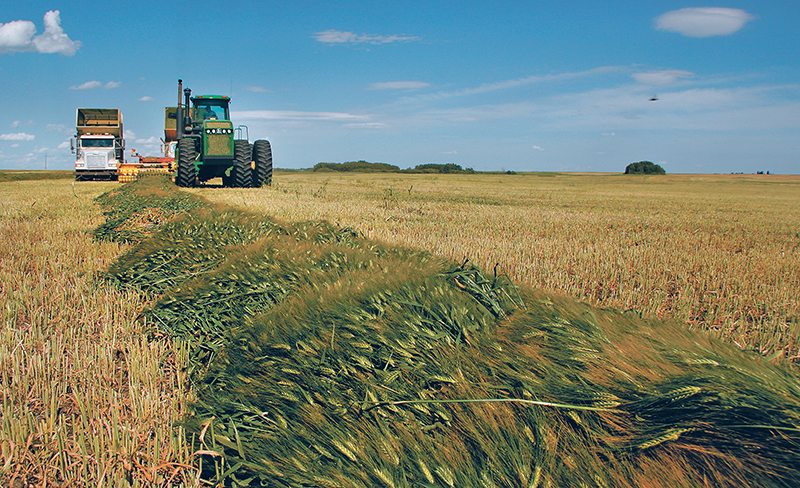Silage is an efficient method of storing winter feed supplies and those who faced a feed shortage this spring might be considering it as an option even if they’ve never done it before.
Dwayne Summach, livestock and feed extension specialist with Saskatchewan Agriculture, explained the basics of silage at a webinar held earlier this year.
He said making silage from a crop offers a lot of flexibility.
“It reduces the weather risk related to making feed. We can cut it, we can chop it, we can pack it basically within one or two days. Cows find silage to be very palatable. They eat it readily. We can feed a lot of different types of animals with silage.”
Read Also

Trump’s tariffs take their toll on U.S. producers
U.S. farmers say Trump’s tariffs have been devastating for growers in that country.
It can be mixed with other feed to stretch rations if needed and if it rains when farmers are ready to cut, the feed does not lose quality as it would if the crop was being baled.
As well, making silage generally requires less time and labour than haying, which allows producers to spend more time managing their cows and pastures.
As for what crop to silage, Summach said it lies in the answer to this question: what do you grow well?
Barley is the predominant choice in Alberta and Saskatchewan, but triticale also has merits. In the black soil zone, oats is one of the higher yielding options. Wheat can also be put into silage, although it tends to be lower yielding and have lower digestibility, he said.
Silage also allows producers to salvage value from crops damaged by hail, drought, frost or weed infestation. For example, if it’s evident early in the season that a crop won’t be worth combining, making silage instead can capture feed value.
Summach said perennial crops are also an option, including alfalfa, grass hay and mixtures.
“There’s lots of different things that can be silaged.”
Though there are differences in crop varieties, Summach said the type of crop is more important than the variety for silage. The type of animal intending to be fed is also vital.
“Are we growing the silage for energy? Are we growing it for pure gut fill? Or are we growing it for protein?”
The answer can help producers select crop type. Once that decision is made, “you really want to make sure that you’re doing everything you can to optimize that crop yield for maximum forage yield.”
Producers who are new to silage should stick with a crop they’ve grown before to minimize risk, said Summach. Consider what grows well in the region, whether it is cereal or forage.
Online calculators are available to figure out producers’ cost per pound of total digestible nutrients, protein and energy.
Manitoba Agriculture has guidelines for estimating silage production costs and Alberta has a barley silage calculator available at bit.ly/2KxyKo8.
Corn silage has higher energy content than most other crops but it is also more expensive to grow.
If corn is the choice, Summach recommended using a planter and fertilizing to optimum practical yield potential. It’s also wise to have a harvest plan before seeding corn because corn silaging can cause a bottleneck with availability of harvesters.
















